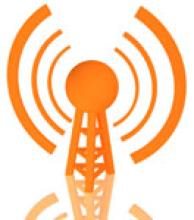Lafayette and Incumbent Responses to New Networks
For another real-world example of how companies respond to public entry into the telecom market (as opposed to theoretical arguments about crowding out investment), let's look back down to Lafayette and how cable incumbent Cox responded:
“Cox froze the cable rates in Lafayette, and they didn’t freeze the rates in other areas,” said Terry Huval, director of LUS, a municipally owned utility company which fought major incumbent opposition before building an FTTH network in Lafayette and starting to offer service earlier this year. “We figured our citizens saved over $3 million in cable rates even before we could offer them service.”I have yet to see a cable company leave a market or reduce investment following the introduction of a public competitor. The opposite tends to happen - they increase investment and often drop prices or leave them lower than in surrounding, non-competitive areas. Often, the rates are not really advertised but if you call from the competitive area, they will offer a better deal:
Trae Russell, communications manager for EATEL, the local telephone franchise in Ascension, La., and some surrounding communities, had seen the same thing happen in his area, when EATEL started offering FTTH-based services in 2006. In fact, EATEL went so far as to take out an ad in the Lafayette newspaper, alerting cable customers there to the discounts that Ascension customers were getting and forecasting similar lower rates in Lafayette once the LUS network was in the works. “It was an incredibly bold move on our part,” Russell said. “Cox came in with an incredibly aggressive promotion for TV service with every bell and whistle you could imagine. We couldn’t figure out how they could even make money on it. So we took out an ad in the Lafayette newspaper that basically said, ‘Hey Lafayette, look at the great prices you are going to get from Cox.’ Cox was not amused.”This is also a lesson for those who want to build a public network. Don't expect to win just because you have a better service and you offer lower prices from what was available before a competing network is built. The incumbent has often already paid off its network. Additionally, incumbents are often larger companies that pay less for their television contracts, so they can lower prices farther than one might expect initially.



